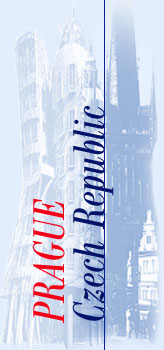NATIONAL MUSEUM => CLOSED FOR RECONSTRUCTION
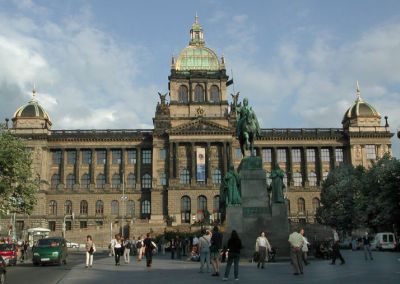
The National Museum, a scientific institution intended systematically to establish, prepare and publicly exhibit natural scientific and historical collections, was founded through the efforts of many distinguished figures in Bohemia beginning as early as the end of the 18th century. These endeavours are widely recognised particularly due to Kaspar Maria, Count Sternberg, who we can be considered the main founder of the National Museum.
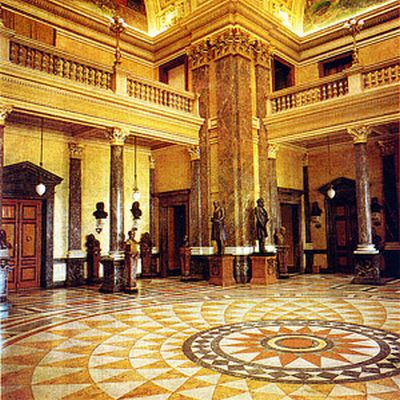
In the beginning, the collections were temporarily concentrated in several locations throughout Prague. In 1819, the museum acquired its first permanent quarters in Sternberg Palace in Hradcany. After a quarter of a century in 1846, the museum moved to the relatively small Nostic Palace in Na Prikope Street. It was not until the end of the century that a truly distinguished and appropriate home for the museum collections was constructed at the upper end of Wenceslaw Square. Following the design of prominent Czech Neo-renaissance architect Josef Schulz, the new museum was built on the foundation of the Czech parliament from 1885 - 1891 at a cost of approximately two million gold crowns.
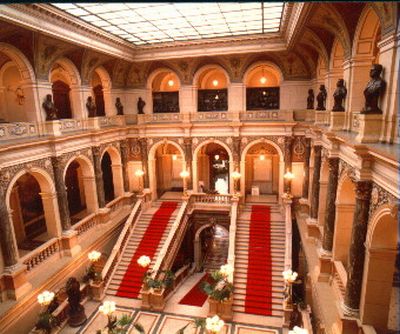
The beautiful palace became the dominant structure on Wenceslaw Square and one of the largest and prominent buildings in Prague. The idea of the building exceeded the more purposes of the museum: the palace became a representative symbol of the climax of the Czech national revival, a celebrated monument to Czech science and culture. That is why the Pantheon was designed as the focal point of the building, a secular cathedral glorifying the celebrated epochs and figures from Czech history, crowned and accented by the massive central cupola reaching a height of nearly 70 meters. The Pantheon is the site of ceremonial and festive gatherings. It is from this place that the burial processions of the most distinguished Czech scientists, artists and politicians have led. Here was also the ceremonial meeting of the newly established Czech Academy of Sciences, Letters and Arts, which made its temporary home here in the new building opened amidst many fanfares on May 18th, 1891.
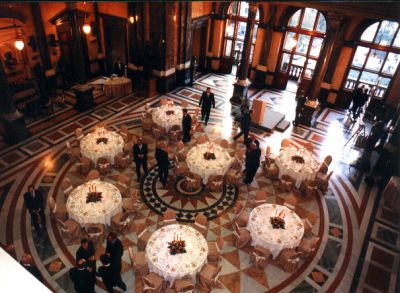
At present the National Museum shelters almost 14 million of items from the areas of natural history, history, arts, music and librarianship, located in dozens of buildings. Throughout the entire year, visitors may view the permanent exhibition of the National Museum as well as a number of temporary exhibits. These are generally housed in the Hollareum exhibit hall on the ground floor of the main building as well as the two corridors leading to this space from the entrance vestibule. There are often other small exhibits in the Museum of book culture also on the ground floor before the entrance into the study room of the National Museum Library. On the first floor, three rooms across from the Pantheon are occasionally reserved for exhibits. Spacious less extensive exhibits are presented on the second floor gallery, while in the Pantheon itself there are periodic exhibits of exceptional significance. The Pantheon is also often used for exceptional evening social events. The interior staircase of the National Museum building is a space having remarkably fine acoustics, and thus is the place of favourite traditional chamber and choral concerts.
|
Room |
Banquet |
Reception |
Cocktail |
|
National Museum |
120 |
350 |
350 | |

